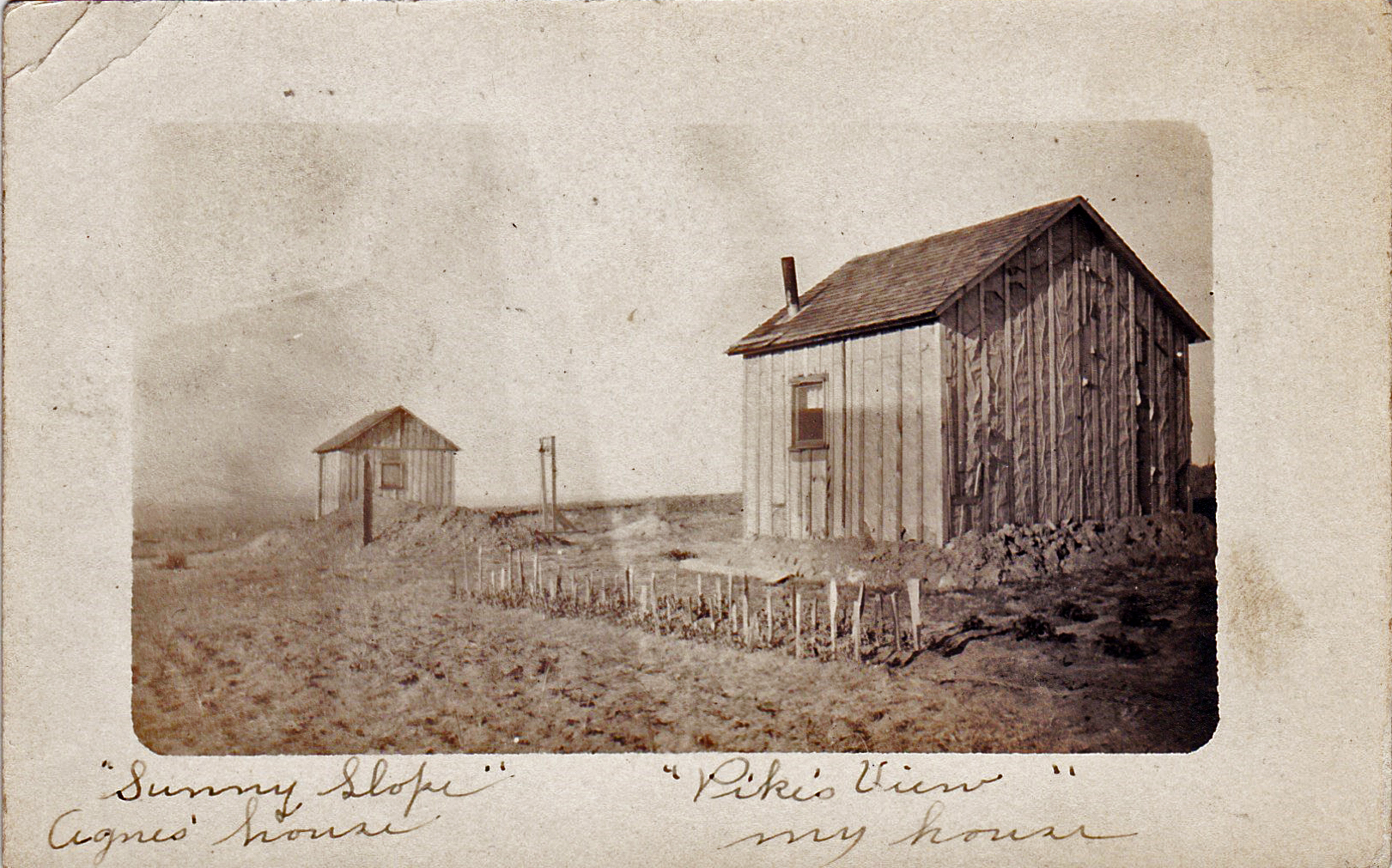“Eva,” the sender of this postcard postmarked in February of 1911, is writing from Wayne, Colorado, to Estella White in Seal Garden, California. She writes:
“Dear Stella, We haven’t heard from you for quite a while. Are you still living? We are O.K., both feel fine. Are having some wind the last few days, guess old Spring is coming in with a whirl. We haven’t had any rain and it is very dry, can’t do any plowing till it rains, if it ever does. Have you made any garden? We want to put in some spuds before we leave. Eva.”
As you can see, Eva has written on the front of the card that Agnes’ house, named “Sunny Slope,” is on the left, and Eva’s house, named ‘Pike’s View,” is on the right. It appears Eva’s house is bordered on at least two sides by a garden. Wayne, Colorado, a long-defunct town, was located in El Paso County, which encompasses Pikes Peak, Colorado Springs and a lot of land to the east. The only information I found about Wayne was that its post office operated from January of 1909 to November of 1912, and that prior to carrying the name Wayne, it was known as Lowland. The Lowland post office was open for all of five months, i.e., from August 13, 1908, to January 15, 1909.
I was intrigued about Eva’s reference to leaving. At the time she sent this postcard, spring was not that far off. Their desire to plant potatoes before leaving tells me they were planning on returning. That they did dryland farming is evident by Eva’s statement that they can’t do any plowing until it rains. I brought up Eva’s reference to leaving with my sister and brother-in-law, Joyce and Gary Herman, who farm outside of Platteville. Gary has farmed all his life, and his father, Alfred “Fritz” Herman, born and raised in Kansas, was a farmer as well.
Gary said Eva and Agnes may have been headed to the Arkansas Valley, where irrigation was available, to help farmers there start their spring crops, e.g., vegetables, melons, etc. (From its head waters near Leadville, the Arkansas River runs through the Rockies and down onto the plains, running through Canon City, Pueblo, La Junta, and Lamar on its way through Kansas, Oklahoma and Arkansas.) Gary said that, in similar fashion, his father and his father’s siblings would head to the South Platte River for work to earn money to keep their farm in Kansas operating. This was especially true in the Dust Bowl years.
It would be interesting to know if Eva and Agnes traversed a regular farming circuit. I think they must have been sturdy folk to spend the winter in these small abodes.
REFERENCES:
- “Colorado Post Offices — 1859 to 1989,” by Bauer, Ozment and Willard, 1990. Published by the Colorado Railroad Museum.
- Wikipedia, “Arkansas River” (at https://en.wikipedia.org/wiki/Arkansas_River)

